Wildcrafting Feral Olives
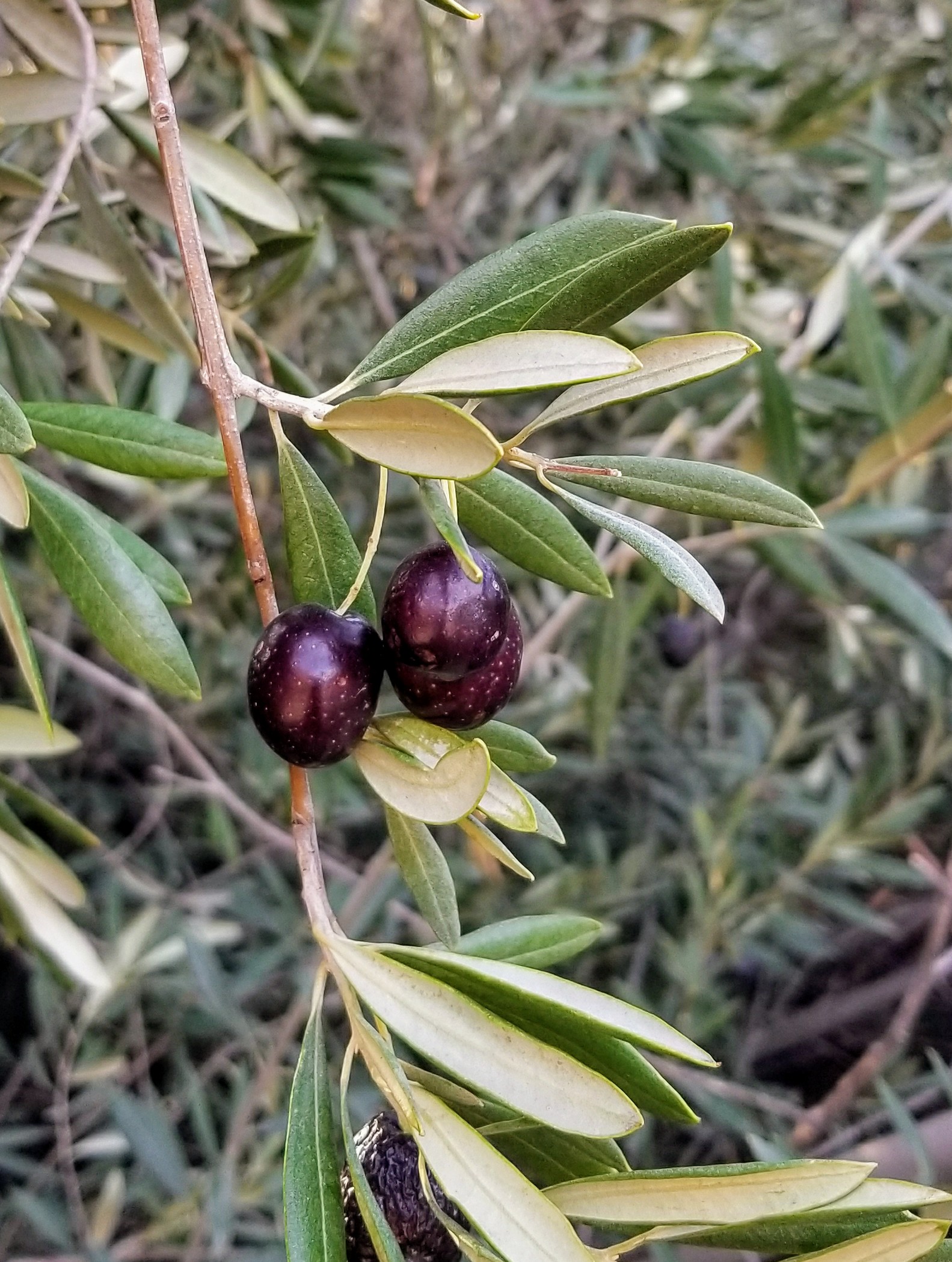
When Europeans first arrived in San Bernardino, they realized that the climate is perfect for planting olive orchards. Today, relics of these huge plantations exist in a pocket of the foothills where I hike, adjacent to San Manuel Indian Reservation.
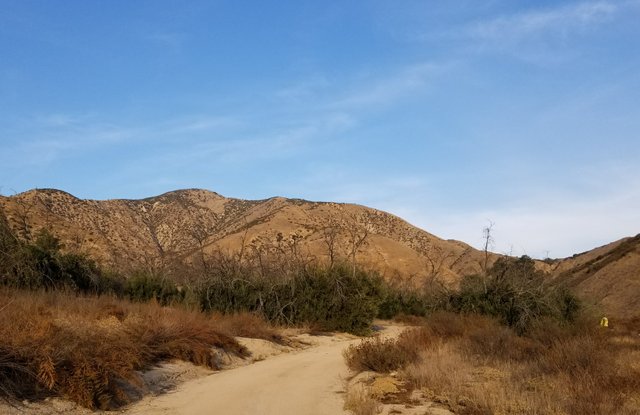
As we round the bend, feral olive shrubs appear. Once tall trees, these bushes survived a fire some years ago.
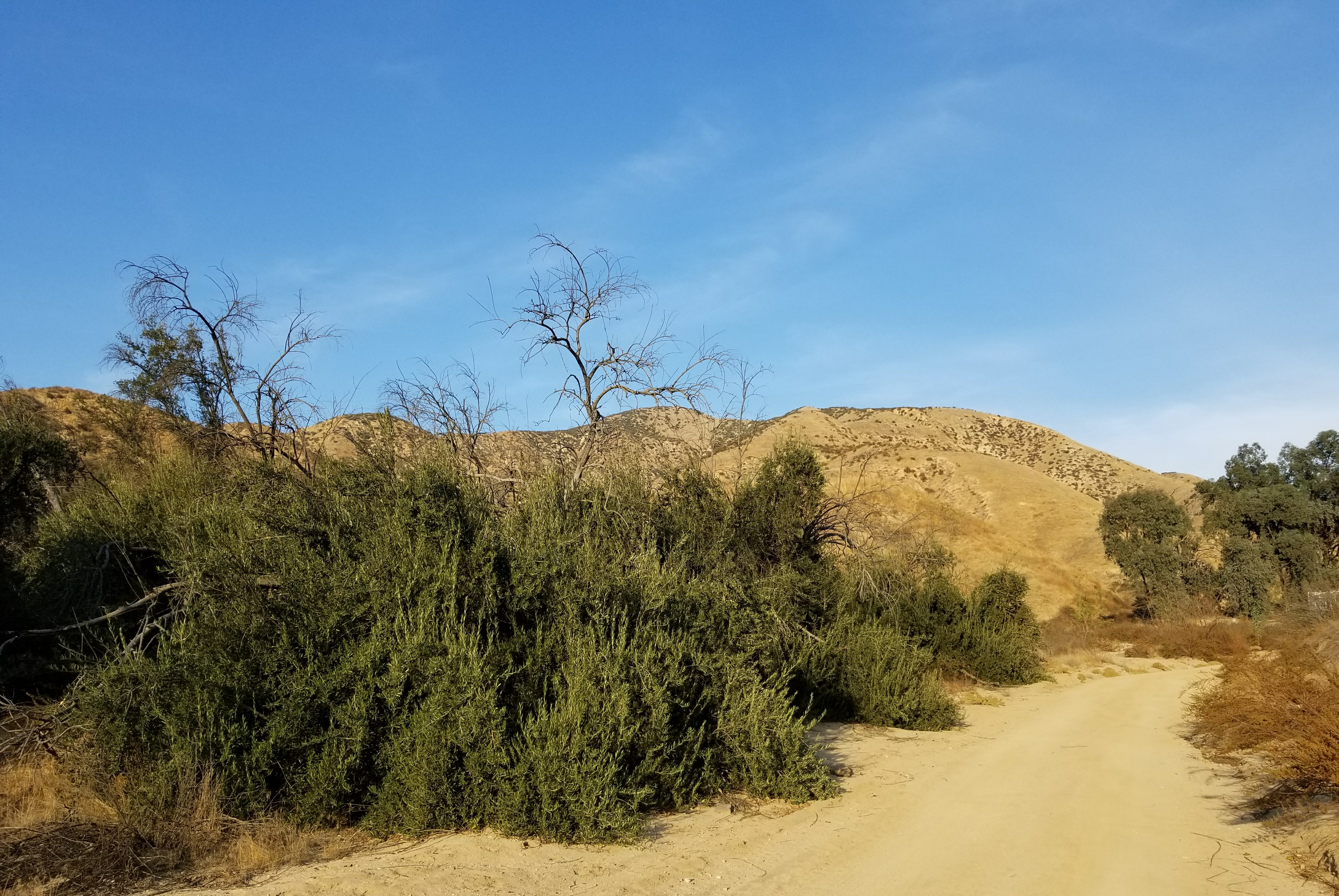
Although singed bare branches crown them, the shrubs were covered with ripe fruit.
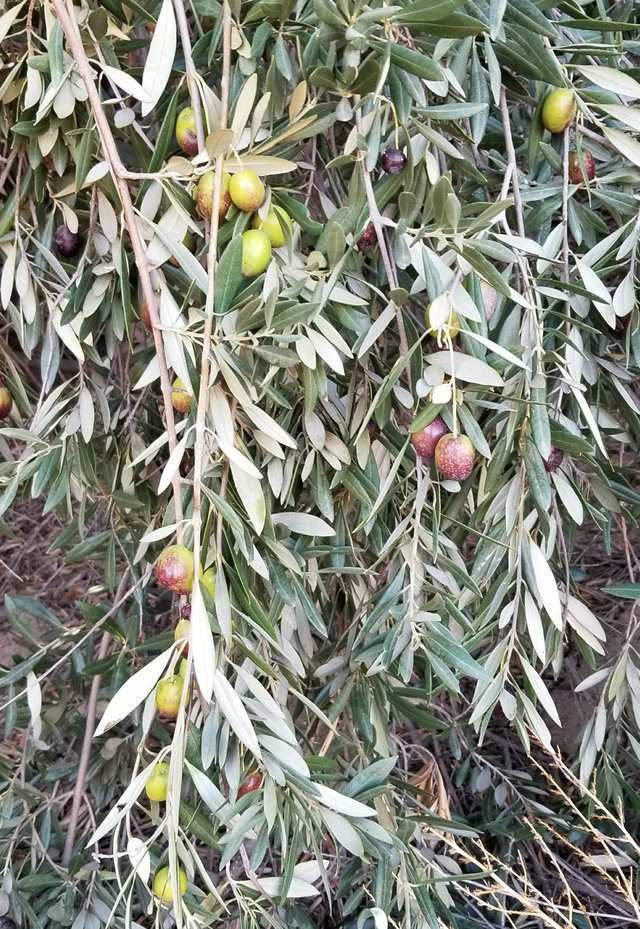 We had fun collecting samples from a bunch of trees, winding between their overgrown rows.
We had fun collecting samples from a bunch of trees, winding between their overgrown rows.
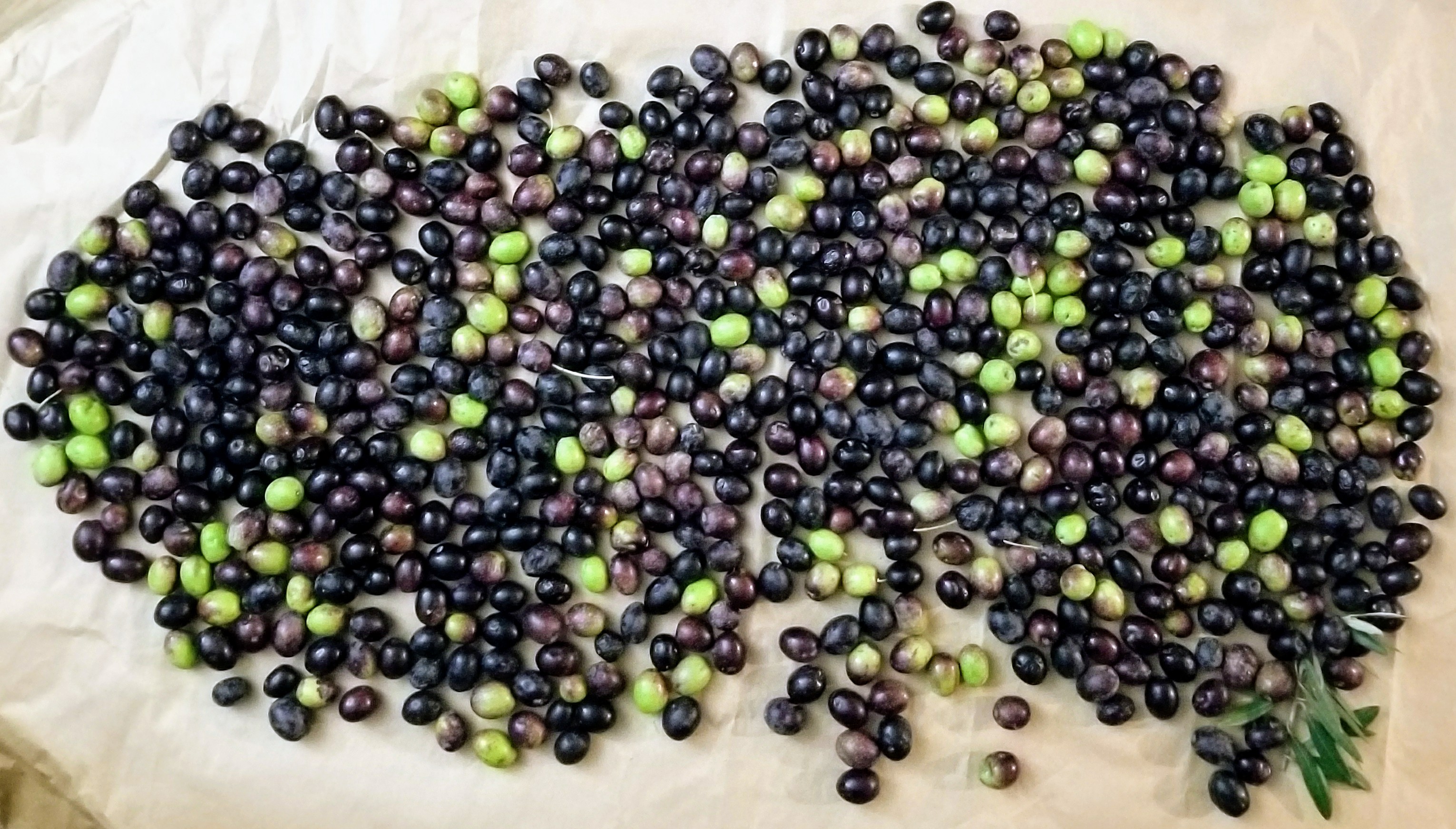 Here is our booty: 8 pounds of plump, ripe olives in a mosaic of color.
Here is our booty: 8 pounds of plump, ripe olives in a mosaic of color.
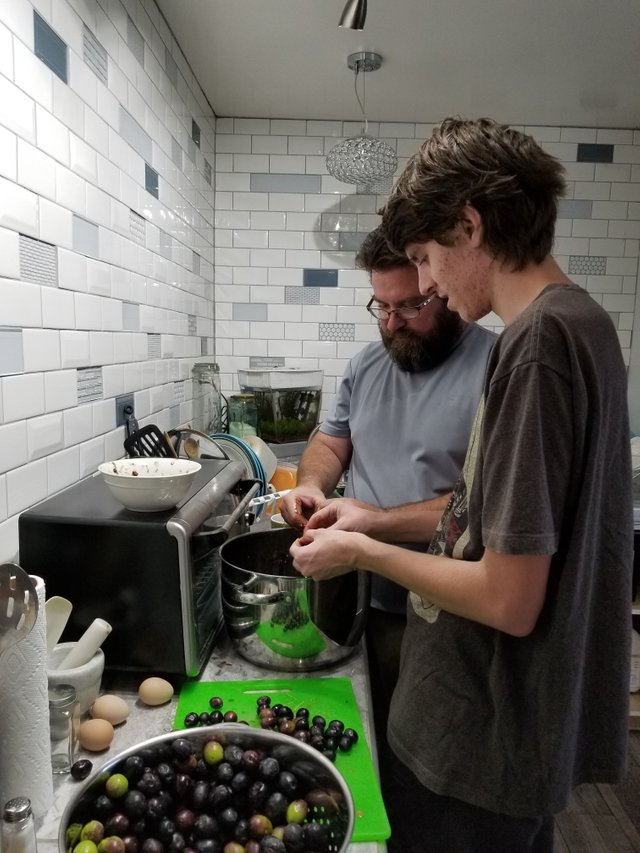 Matt and Ivan pit the olives and check for parasites. About 20% of this batch showed evidence of fruit fly larva and had to be tossed.
Matt and Ivan pit the olives and check for parasites. About 20% of this batch showed evidence of fruit fly larva and had to be tossed.
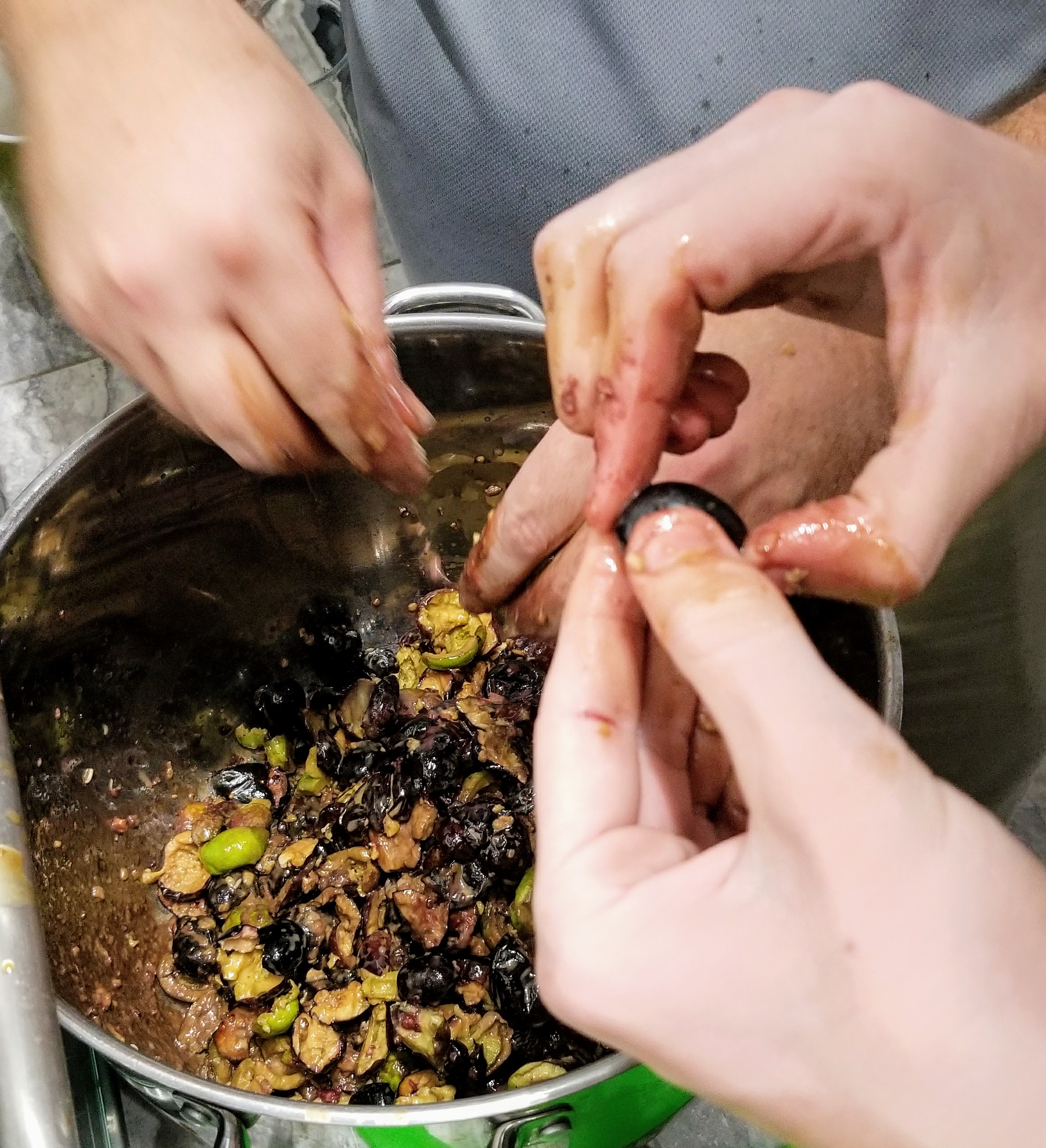 Pitting is a bore and a chore. You could say, it's the PITS!
Pitting is a bore and a chore. You could say, it's the PITS!
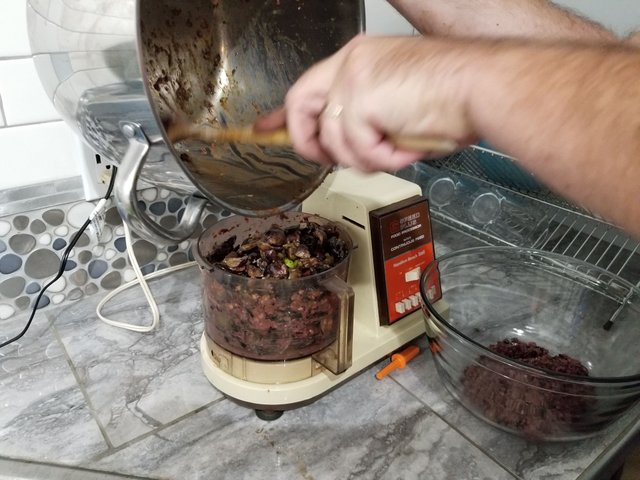 Fruitfly-free flesh went into the food processor.
Fruitfly-free flesh went into the food processor.
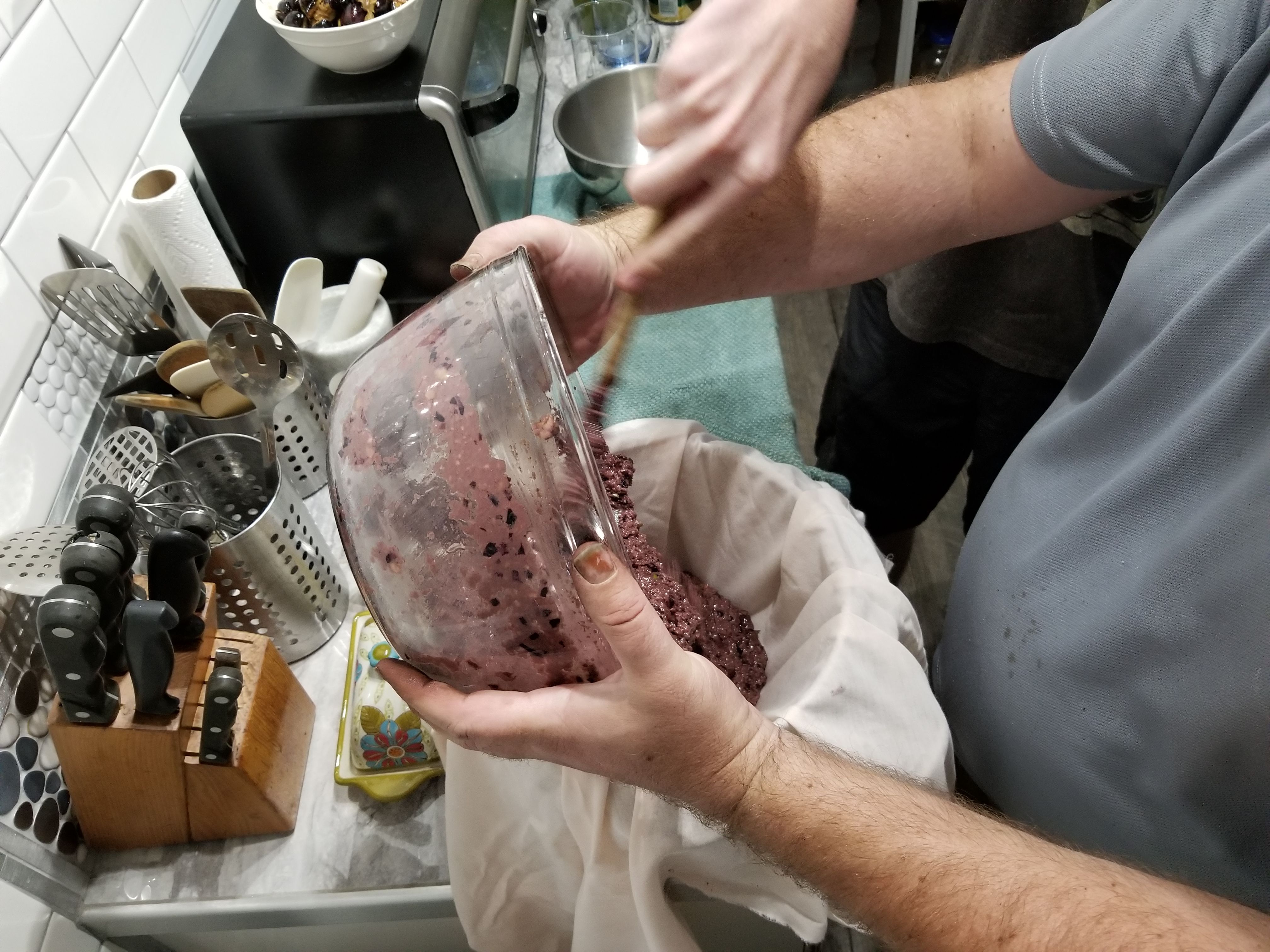 Processed olives go into an old pillowcase to strain.
Processed olives go into an old pillowcase to strain.
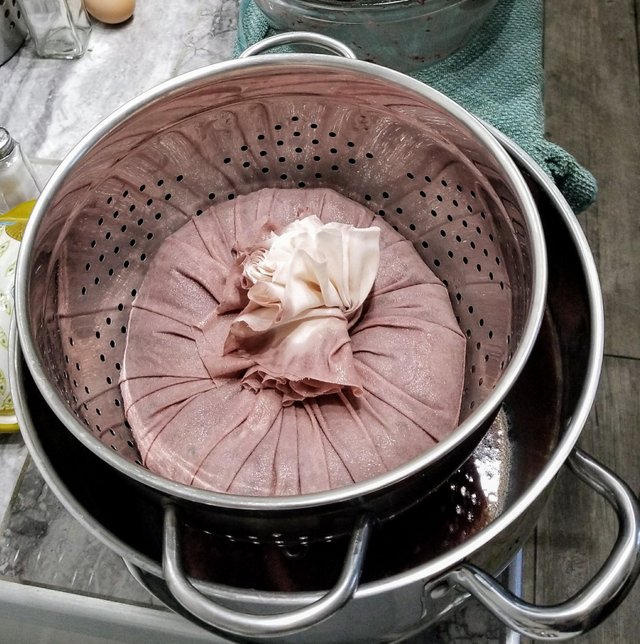 Tie off the top.
Tie off the top.
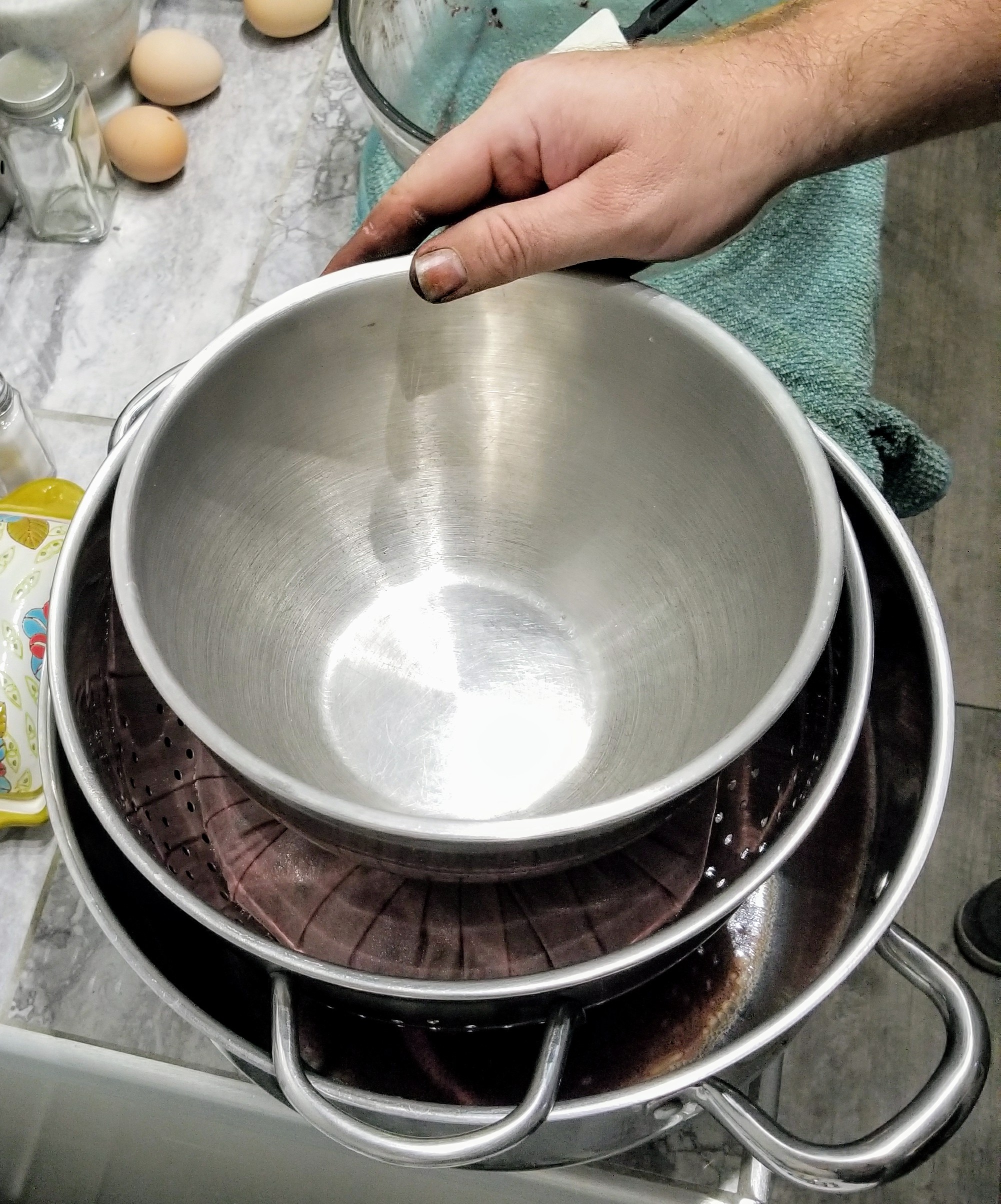 Matt placed a bowl on top to weigh down and press all the liquid out.
Matt placed a bowl on top to weigh down and press all the liquid out.
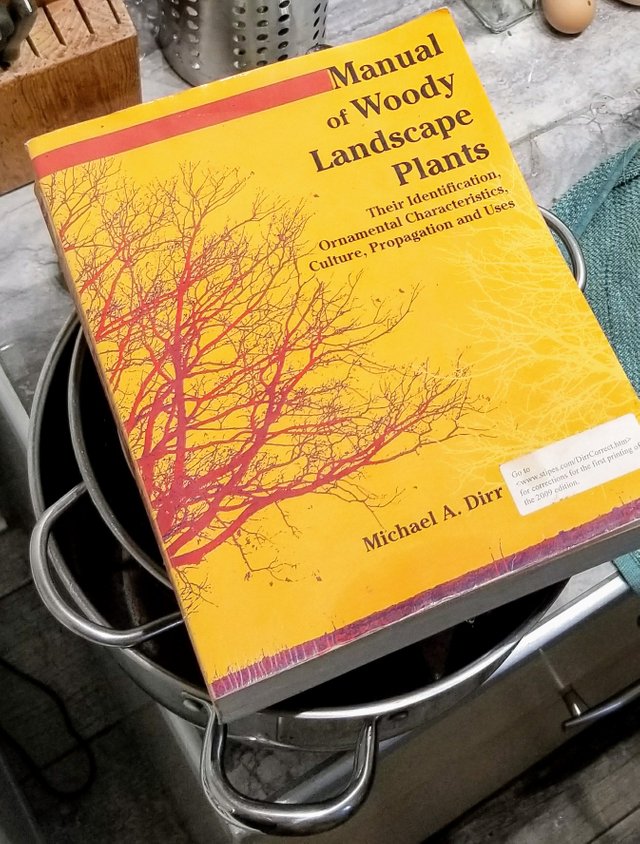 A weighty subject.
A weighty subject.
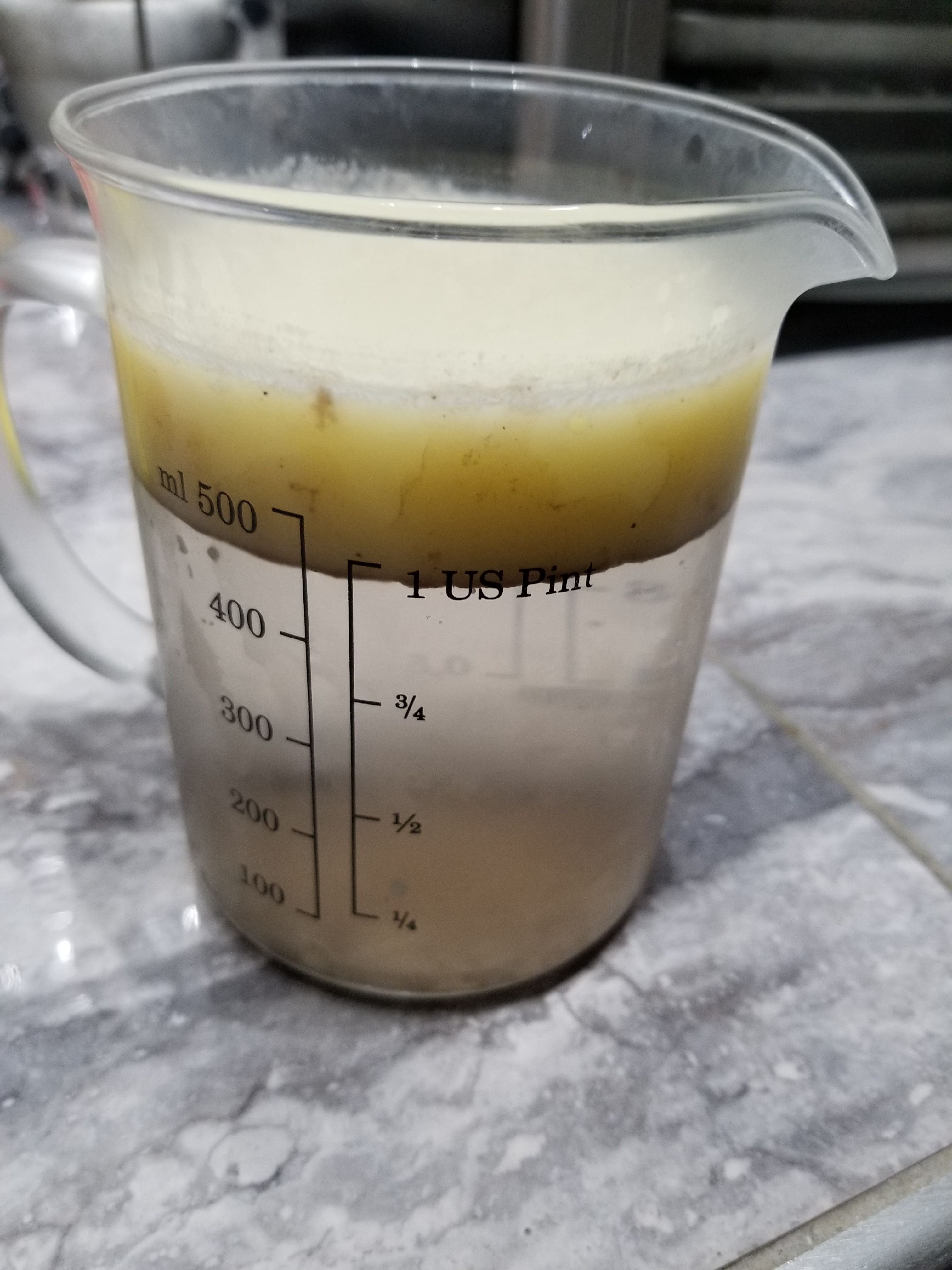 Once all the liquid is collected into a measuring cup, we refrigerated it, allowing the oil to separate into a puck on top. Matt decanted the bitter juice and flesh several times. He recombined the oil puck with clean water, and allowed it to separate again several times. The above photo shows the olive oil after about the 4th bath.
Once all the liquid is collected into a measuring cup, we refrigerated it, allowing the oil to separate into a puck on top. Matt decanted the bitter juice and flesh several times. He recombined the oil puck with clean water, and allowed it to separate again several times. The above photo shows the olive oil after about the 4th bath.
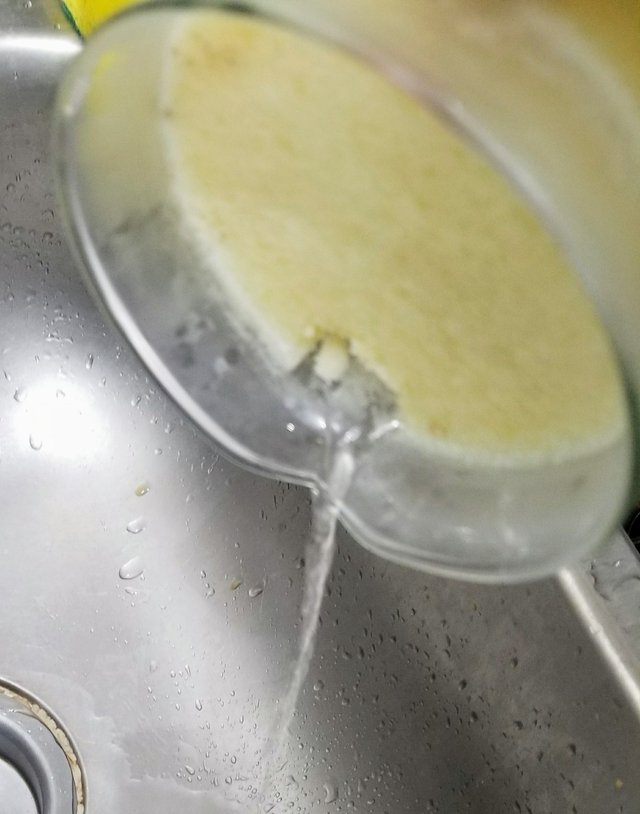 Decanting the liquid.
Decanting the liquid.
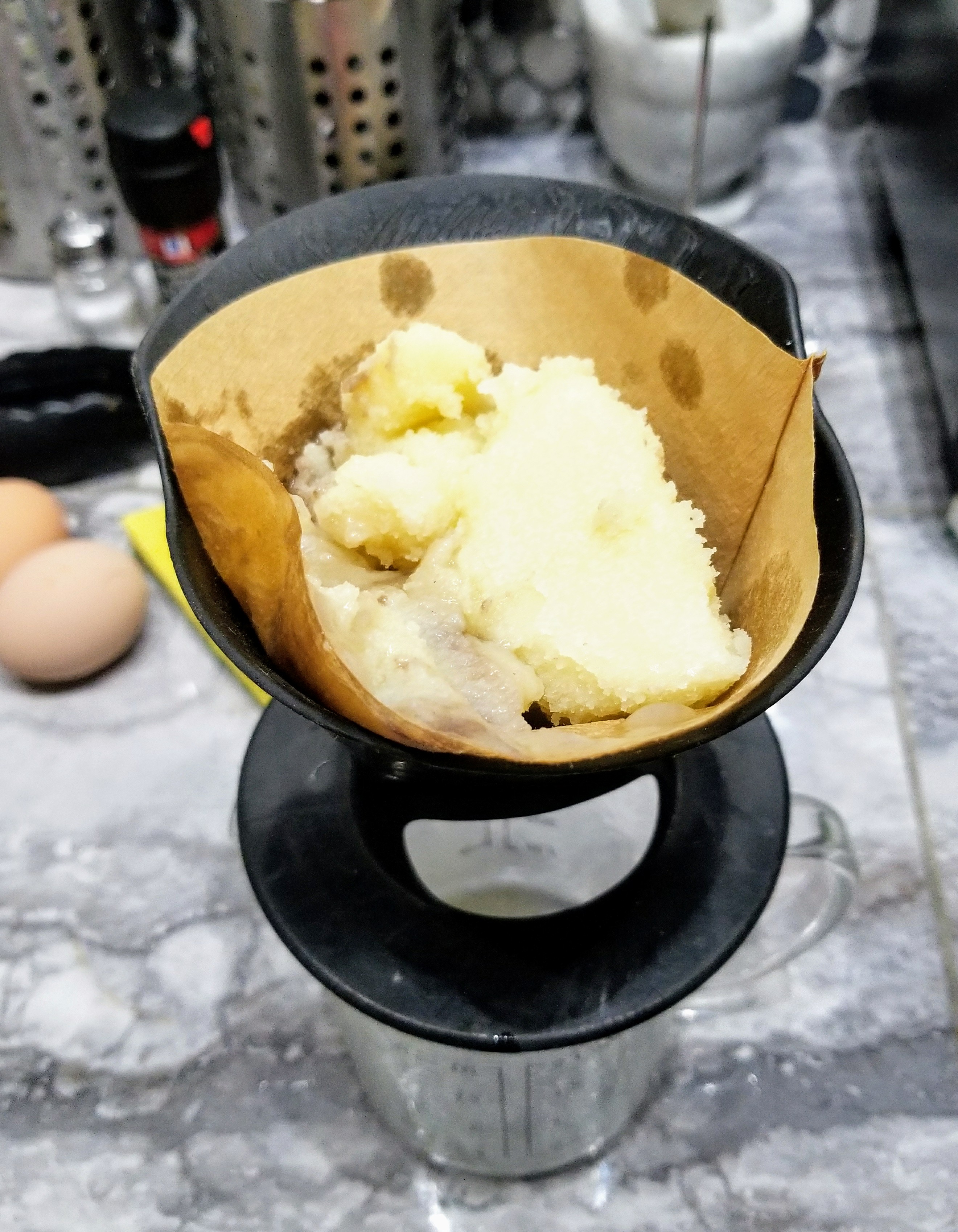 Satisfied with the clarity of the puck, Matt put it into a coffee filter to sieve out any remaining solids.
Satisfied with the clarity of the puck, Matt put it into a coffee filter to sieve out any remaining solids.
Finally, he used a syringe to lift off the clearest oil, and put it into a cruet.
Success!
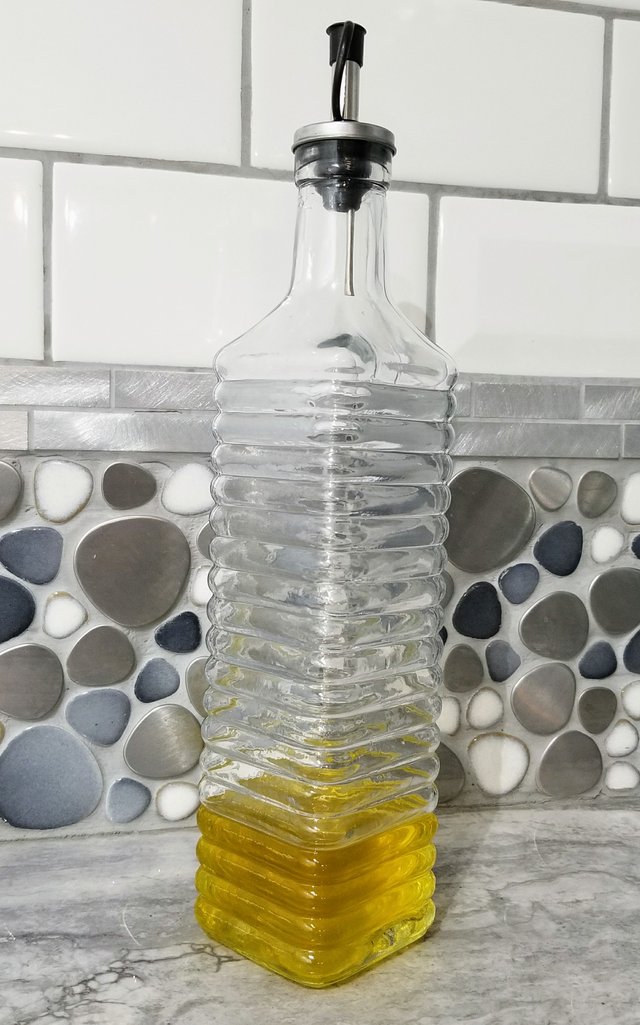
The final product is a light nutty, buttery olive oil! We were able to glean about 200 mL of oil from 4 pounds of fruit.
(Pitting proved to be too tedious to do 8 pounds that day. At the time we harvested, our auger juicer was awaiting some parts. If we had had it available, it would have made the process much easier and we probably would have nearly filled this entire cruet!
I am thrilled with our experiment, and I look forward to harvesting future feral olives throughout their ripening phase, as well as identifying which trees produce the best fruits. There appear to be several varieties present, and since they are not irrigated, they also vary in plump juiciness.
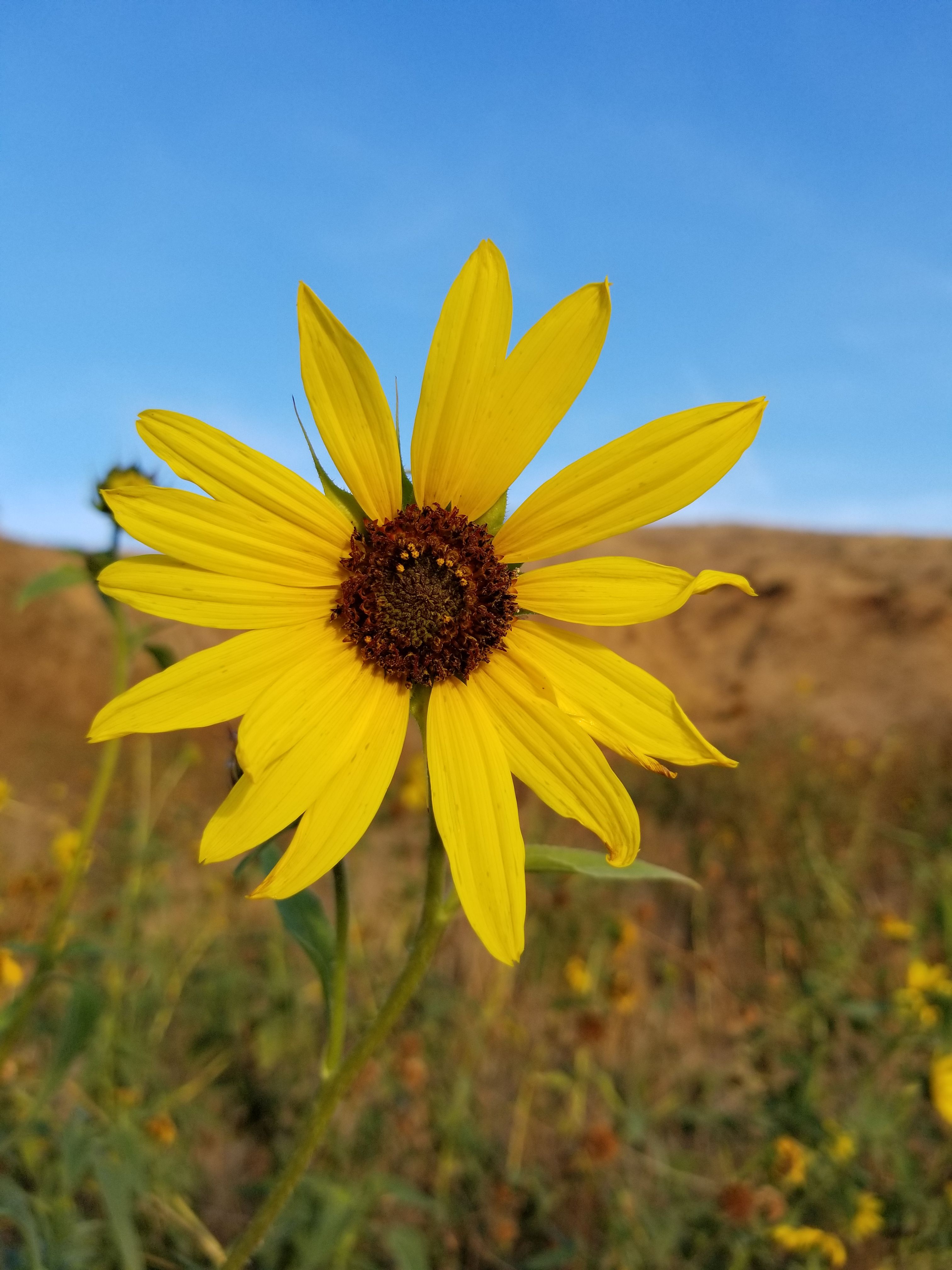 A cheerful sunflower gave us its blessing after a brilliant day of wildcrafting. Thank you, Mother Nature!
A cheerful sunflower gave us its blessing after a brilliant day of wildcrafting. Thank you, Mother Nature!
Blessings to you, and remember, #OlivesMatter!
Congratulations @creationofcare! You have completed some achievement on Steemit and have been rewarded with new badge(s) :
Click on any badge to view your own Board of Honor on SteemitBoard.
For more information about SteemitBoard, click here
If you no longer want to receive notifications, reply to this comment with the word
STOPI am thinking we should 'adopt' a couple of the trees; Prune the lowest branches to get them off the ground, clear the fruits still on the tree (supposed to help minimize the fruit fly problem), maybe clear the deadwood... and see if we can assist their recovery.
I approve!
There's something enchanting about little lost or forgotten orchards like yours. That is a real treasure!
Yes! It reminds me of a childhood favorite, "The Secret Garden". Thank you!
@originalworks :)
The @OriginalWorks bot has determined this post by @creationofcare to be original material and upvoted it!
To call @OriginalWorks, simply reply to any post with @originalworks or !originalworks in your message!
Thank you!